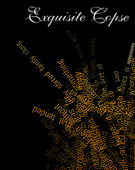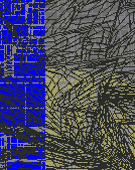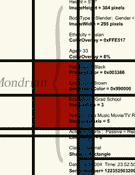I created the set of 20 online sketches in the process of creating a large scale audiovisual installation that uses real time water quality data, a single pixel, and one tone to conceptually visualize the quality of lake, river, or drinking water. This work was produced at the ETHZ's Colab in Switzerland as part of the Artist-In-Labs residency.
WHY WATER? The future of the world population depends on the availability of a safe drinking water supply. In some countries, drinking water is a scarce resource, while in others vast reserves exist. Freshwater resources are susceptible to a variety of chemical contaminants. Common pollutants include pesticides, fertilizers, petroleum products, and industrial solvents. As global citizens we must become more concerned about potential health risks associated with our drinking water.
Water quality tests are conducted by scientists who graph data over time to monitor shifts in concentrations of dissolved solids and ...
Full Description
I created the set of 20 online sketches in the process of creating a large scale audiovisual installation that uses real time water quality data, a single pixel, and one tone to conceptually visualize the quality of lake, river, or drinking water. This work was produced at the ETHZ's Colab in Switzerland as part of the Artist-In-Labs residency.
WHY WATER? The future of the world population depends on the availability of a safe drinking water supply. In some countries, drinking water is a scarce resource, while in others vast reserves exist. Freshwater resources are susceptible to a variety of chemical contaminants. Common pollutants include pesticides, fertilizers, petroleum products, and industrial solvents. As global citizens we must become more concerned about potential health risks associated with our drinking water.
Water quality tests are conducted by scientists who graph data over time to monitor shifts in concentrations of dissolved solids and chemical pollutants. Such specialists identify changes in our freshwater resources by building visual models that process enormous amounts of data. Familiar techniques include bar graphs and x-y scatter plots. Holmes uses the same water quality data to create conceptual forms of data visualization to communicate vital environmental information to a non-scientific audience. The broader goal of the proposed research is to promote sustainable and ecologically responsible modes of living, and a general awareness of both local and global water quality issues.
Work metadata
- Year Created: 2004
- Submitted to ArtBase: Monday Dec 13th, 2004
- Original Url: http://www.enviroart.org/HolmesColab/docs/index.html
- Permalink: http://tiffanyholmes.com/Projects/floating_point/HolmesColab/docs/index.html
-
Work Credits:
- Tiff Holmes, creator
Take full advantage of the ArtBase by Becoming a Member





